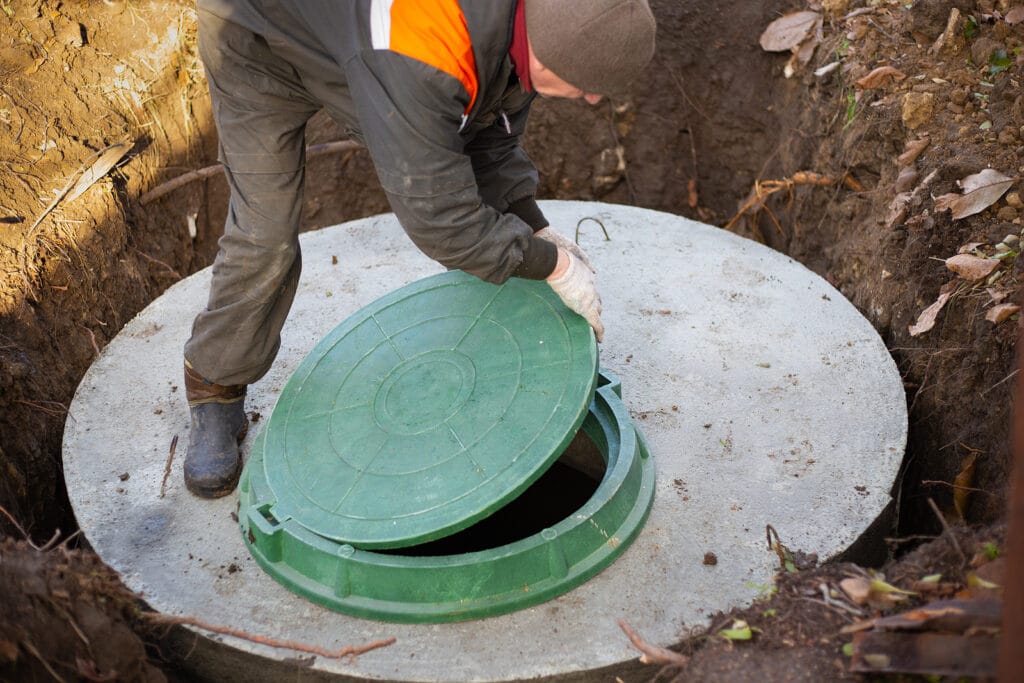Certain aspects of owning a home are not noticed until they need attention. Septic tanks are one very important, but often neglected aspect of a house. It is easy to assume that it can do the job with ease and without maintenance. Like all systems, septic tank have a life expectancy and will eventually require replacement.

Cost to replace the septic tank may be a significant financial burden for homeowners who aren’t ready. The total price is determined by numerous factors, therefore it is important to prepare a budget for the replacement system.
In order to figure out the exact cost of installing an upgrade to a septic tank, it’s important to consider more than just the cost. It’s not just a case of replacing the old tank with a brand new one. The cost is influenced by a variety of services and components. Every step, from getting permits to hiring professionals and digging to the installation results in costs. The homeowners must plan their plan their budgets accordingly.
Cost of septic tanks leach fields, and the installation are all significant elements to be considered. The price of a new tank is contingent on its size, material and complexity of installation. Furthermore, the location of your home, the local laws, and soil conditions are also factors that can affect the cost. It is important to consult septic system experts who can evaluate your specific needs and provide a detailed estimate. They’ll also think about the size and shape of the leach field to give you a comprehensive comprehension of the amount your project will cost.
Leach fields, also known as drainfields, are another significant cost. It is essential to the treatment and dispersal of wastewater. It is important to think about the replacement process carefully before replacing a damaged or defective leachfield, or one that has failed. It can be a major factor in the cost of a septic system replacement. Leachfield size, the soil composition and the access are a few factors that can affect the cost.
homeowners should consider the cost related to the replacement of the tank for septic. The process could disrupt your daily routine by requiring that you leave your residence, or limit your water usage while the installation is taking place. These inconveniences should be factored into your planning as they can affect your routine and may cause additional expenses, for example, accommodation expenses or changes to your daily schedule.
It is also crucial to recognize that proper maintenance and treatment of your septic systems are essential to prolong their life and minimize the possibility of premature replacement. Inattention to maintenance can result in bigger issues later on, including damages to the drainfield or failure of the tank. Incorporating septic system maintenance fees into your budget is an excellent decision that will save more money in the future.
By now, you may have realized that determining the septic tank replacement cost is not a straightforward task. It takes careful consideration of many elements, ranging from size and construction of the tank to the complexity of the installation and condition of the leach field. In addition, the place of your home and local regulations could impact the total expense. To obtain a cost estimate that is accurate You should speak with an expert who has expertise in the repair of septic systems.
If you’re thinking about replacing your septic system, you may be surprised to learn there’s hidden expenses that you hadn’t thought of. These expenses can be incurred quickly, which is why it’s vital to be aware of them before you make a decision.
Here are a few of the hidden costs involved in replacing an septic tank:
The costs of permits and inspections. Before you can begin working to replace your septic tank you’ll need to get permits from the local authorities. These permits are expensive and you may have to pay for inspections.
Cost for excavation and removal. Before the new system is installed, it is essential to demolish and excavate the previous system. It can be an expensive process, particularly if the system is located in an extremely difficult to access place.
Cost of backfilling and the cost of backfilling. After the old system has been removed, the hole has to be refilled and graded. This ensures that the new system drains correctly.
The expense of landscaping. Once the new system is installed, you may need to plant some trees in order to make it look tidy and neat. This can be costly, particularly if landscaping services are required.
When planning the replacement of your septic tank, it’s crucial to include these cost-savings that aren’t obvious. You’ll avoid unpleasant surprises in the future by making plans in advance.
The decision to invest in environmentally friendly septic solutions is a great option for homeowners on a budget. Not only are they cost-effective alternatives to traditional septic systems, but they also help preserve the environment by reducing runoff and reducing the amount of water pollution. Additionally, eco-friendly septic options are becoming increasingly available and affordable, making them the perfect option for those seeking to lower their impact on the environment without spending a fortune. While there are initial costs involved with switching to an eco-friendly system the savings over time will more than make up for the initial costs. Going green isn’t just a trend, it’s a vital change in lifestyle that anyone should think about if they’re really committed to protecting our planet for generations to in the future. With the proper system in place, you’ll be able to relax knowing that you’re contributing to help the world, as well as making sure your property will run efficiently and effectively without the need for maintenance, and a lower cost per month.
Leave a Reply